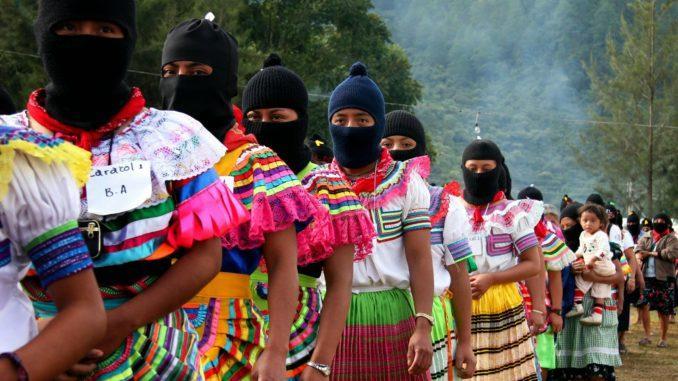
This year marks the 40th anniversary of the founding of the EZLN on November 17, 1983, and in a few weeks we will celebrate the 30th anniversary of the uprising of January 1, 1994.
Zapatismo is as alive as it was three or four decades ago, which motivates us to try to understand its exceptionality. The first issue is that we are facing a revolutionary process, since there was a change of regime in the areas where Zapatismo is based.
The regime of the haciendas and the farmers came to an end. The lands were recovered and the hacienda owners fled. In those spaces, the support bases and communities began to govern themselves, the autonomous municipalities and the Good Government Councils that exercised autonomy.
But this is not a classic revolution, like those we have known in the last two centuries and, in particular, since the Russian Revolution of 1917. Here we can recall the dialogue between Subcomandante Marcos and old Antonio, to say that the process of transformations begins at a certain moment, perhaps impossible to date, and never ends, if it is real.
The story refers to the struggle, which is like a circle that has no end, but I think it can be applied to the Zapatista process of change. Secondly, I am convinced that Zapatismo modified the concept we had of how to change the world, focused on dates and places: October 25, 1917, taking of the Winter Palace in St. Petersburg, for example; July 14, 1789, taking of the Bastille; October 1, 1949, triumph of the Chinese revolution and proclamation of the People’s Republic. And so on.
If I understood correctly, the Zapatista process began, perhaps, 40 years ago, and is still transforming reality. It is an extensive process of permanent change, centered on human beings, whose center is autonomy, and not just on things or objects.
The recovery of land, of the means of production, is central, but the occupation of buildings and institutions is not. The fundamental changes can begin, as in this case, even before recovering the land, because they take shape in the ways of doing, in collective work as the axis of any construction and, of course, in autonomy.
Zapatismo refuses to stagnate, to become institutionalized and, hence, to stop transforming life. It is assumed as an always unfinished process, not frozen in dates, places and people. Based on these ideas, I propose to compare the Zapatista process with the situation that other processes of change were going through when they turned 30 years old.
The Russian revolution was shipwrecked long before it reached its 30th year. Less than a decade after the seizure of power, the purges within the party and the repression against those who disagreed with the leadership intensified, but above all the attacks on the peasants and their customs, imposing forced collectivization.
It is true that the Russian revolution had to face a civil war with the intervention of the main foreign powers. But the repression against the workers’ opposition and the assassinations of top leaders such as Trotsky, are not a consequence of the civil war, but of the struggle for absolute control of power by a reduced group of leaders.
In 1979, three decades after the triumph of the revolution, China was embracing capitalism after having imprisoned several party leaders, including Mao’s widow, Chiang Ching. Despite Mao’s mistakes and his tendency to rule from above, his death in 1976 precipitated the march toward capitalism and the abandonment of any transformative tension by the new leadership led by Deng Xiaoping and those who followed him.
The prevailing political culture in those processes moved away from the initial and founding principles; over time it tended to reproduce the ways and vices of the defeated classes, as Lenin himself observed towards the end of his life. Stalin is often compared to a tsar and the Chinese communists to the privileged caste of mandarins.
The struggle for power was the axis of the “triumphant” revolutions, centered on the State. Autonomy and the construction of the new are at the core of Zapatismo. For all these reasons, 30 years after the “Enough is enough!” we can say that Zapatismo continues to transform the world, creating the new world and defending it.
It has created new ways of exercising power through “commanding by obeying.” The relations between people continue to be modified in health, education, production, justice, parties, sports and art, and guided by the rebel ethic.
It is not that they did something great in 1994, and that’s it. It is about the long process of changes and creations, and understanding that now they are going for more. After two long decades of a progressivism that has shown its failings, Zapatismo remains ethically unimpeachable. They continue with the same vitality as always in spite of the sieges and violence they face. Zapata lives…
Original text published in La Jornada on November 17th, 2023. https://www.jornada.com.mx/noticia/2023/11/17/opinion/40-anos-construyendo-autonomia-7780